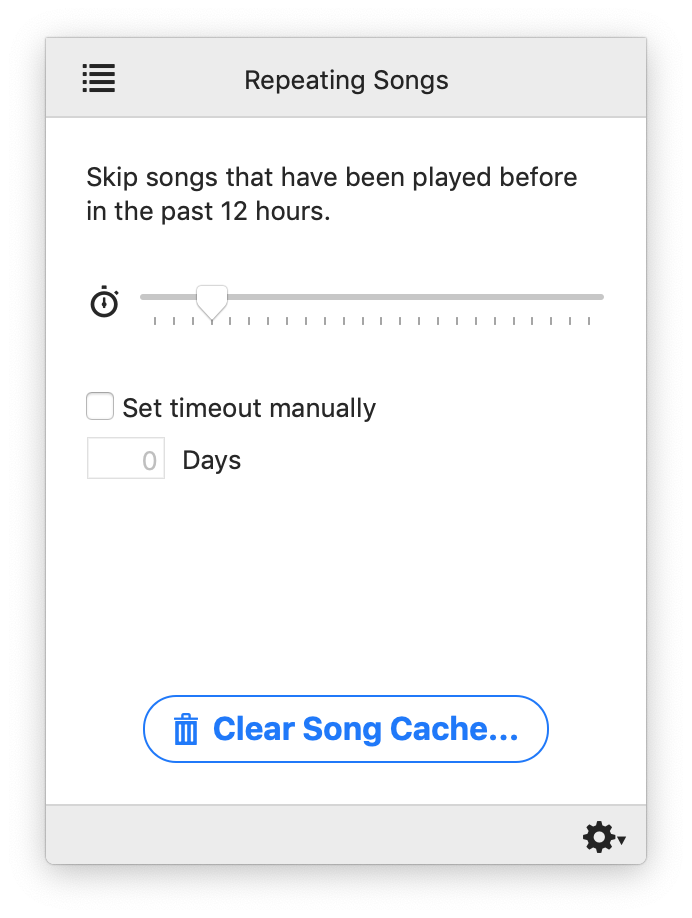Denied 1 3 0 – Skip Terrible Music


Adobe xd 27 0 120. Tuesday marked the end of the TV repacking following the TV incentive auction – shrinking the TV band by moving all TV stations to channels below what used to be Channel 37 (with a few exceptions for stations given a couple of extra months due to last minute COVID-19 delays, as discussed in the FCC decision here). The FCC announced the end of the transition in a Press Release, and Chairman Pai delivered remarks on an American Consumer Institute webcast, thanking his staff for making the transition happen. https://maquinitas-para-jugar-mexfree-bet.peatix.com. Remarkably, in the 15-year life of this blog, this is the second time that we have written about the shrinking of the TV band – the first following the transition of television from analog to digital over a decade ago (see, for instance the articles here and here from the 2009 digital transition).
If Denied helped you skip a track or two, consider leaving a tip in the app. Fafafa free slots. ### Changed. Switched to a new versioning system. This is update 2 of 2020.:) ### Added. A new Crash Reporter to catch potential problems. Anonymous 'app open' and device statistics reporting to help shape the future of Denied. Stellar brings the best in live entertainment to you. Discover local and global concerts, theater, sports, and more. With Stellar, you get a front row seat to ticket-worthy live.
That transition to digital is not complete, as we were reminded by another Public Notice released by the FCC on Monday. This Public Notice emphasized to LPTV and TV translator operators, some of whom still have not transitioned to digital operations, that they have one more year to do so. By the end of the day on July 13, 2021, all LPTV and TV translator stations need to be operating in digital or they need to cease operations. https://hack-software447.hatenablog.com/entry/2020/12/17/191223. The Public Notice reminds these operators who have construction permits for new digital facilities to extend those permits if they expire without construction completion before next year’s transition deadline – and alerts these operators to file by May 1, 2021 any last-minute modifications of the technical facilities specified in construction permits authorizing their digital transition. Filing by May 1 gives the FCC sufficient time to process these applications so that any changes can be implemented by the July 13 deadline.
While the public notice does not mention it, the July 13, 2021 deadline would also be the date by which so-called Franken FMs (LPTV channel 6 stations that use their audio to broadcast a signal that can be received by FM radios) would have to cease operations, unless some extension is authorized by the FCC. The radio trade press made much of this yesterday. The FCC has several times asked for public comment on what to do with these stations – whether to allow post-transition analog audio transmissions (see, for instance, our article here), but has not yet made any decision. Obviously, radio operators running these hybrid stations are hoping for action before the July 13 deadline to allow their operations to continue beyond the deadline.
At the same time the FCC is ending one transition, the TV industry is beginning another – the transition to NextGen TV – ATSC 3.0. As we have written before, this is a new TV transmission standard that will operate with an Internet Protocol compatible system that can interact with other IP-based devices, that can transmit more data along with video programming, and is far more robust in a mobile environment than is the current TV transmission standard. In the past few weeks, several TV markets have announced the initiation of regular ATSC 3.0 transmissions. As we wrote here, the FCC recently resolved some outstanding issues, including determining that the broadcast ownership limits would not be applied to parties using spectrum on multiple stations in the same market for what the FCC termed Broadcast Internet services. In that same decision, the FCC also asked for comments on other actions it could take to promote the development of these services. That request for comment was just published in the Federal Register, setting August 17 as the comment date, with replies due August 31.

Denied 1 3 0 – Skip Terrible Music Video
In one of our weekly updates on FCC actions, we also noted that the FCC recently resolved several reconsideration petitions that had sought review of the FCC’s initial order allowing ATSC 3.0 operations. That recent decision provides guidance on how the Commission will evaluate petitions for waiver of the local simulcasting rules for broadcasters deploying ATSC 3.0 who cannot find a partner station to act as a “lighthouse” station, i.e. continuing to broadcast its signal in the current transmission standard for some period of time so that consumers who have not bought new TV sets can continue to receive the signal. The decision also declines to allow broadcasters to use vacant in-band channels for ATSC 3.0 deployment. It clarifies that the “significantly viewed” status of an ATSC 3.0 station will not change when that station moves its ATSC 1.0 simulcast channel to a host facility. It also denied various petitions challenging aspects of the Commission’s 2017 Next Gen TV order, including issues dealing with the local simulcast requirement, the application of retransmission consent rules, patent licensing issues, and sunset of the obligation to use the current transmission standard for ATSC 3.0 (that sunset allowing the new transmission mode to evolve over time without the need for FCC action). In effect, it cleared the way for the deployment of the new technology that is already taking place.
Denied 1 3 0 – Skip Terrible Musicas
Broadcast TV is an ever-changing medium, and this is obviously a time of rapid change. Keep watching the FCC and other agencies as regulatory obligations evolve along with the transmission standards.

Denied 1 3 0 – Skip Terrible Music
UNDER MAINTENANCE